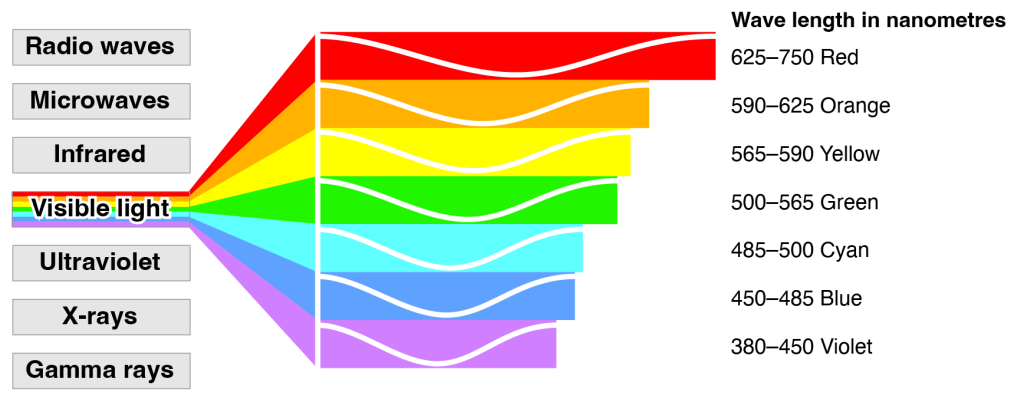2. Colour theory: the visible spectrum
As stated in Chapter 1, section 1.1, Sir Isaac Newton was the first to classify the visible spectrum as we know it today.
This diagram shows the visible light spectrum and other types of non-visible electromagnetic radiation measured in nanometres (nm).

The colours we see are based on wavelengths, and as Figure 2.1 shows, there are wavelengths that the human eye cannot see, like radio waves, X-rays, and microwaves. In the visible spectrum, violet rays, which are the shortest wavelengths are also the highest in energy. Red light wavelengths are the longest and the lowest in energy.
This chapter will focus on the visible spectrum, and the science-related aspects of colour vision. Each section will include information, links, resources, and learning activities to further develop your knowledge.
Learn about the topics listed here:

